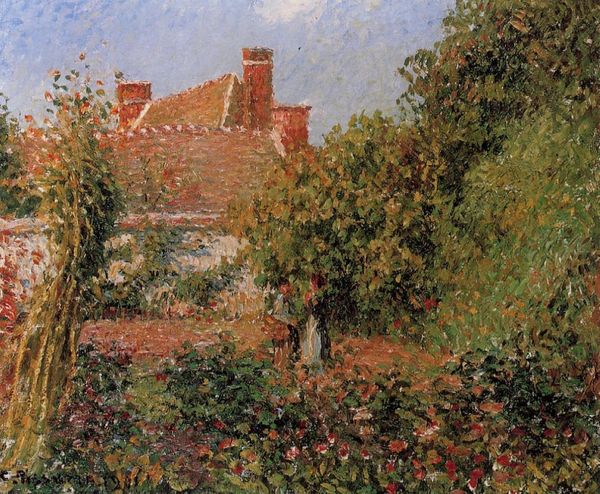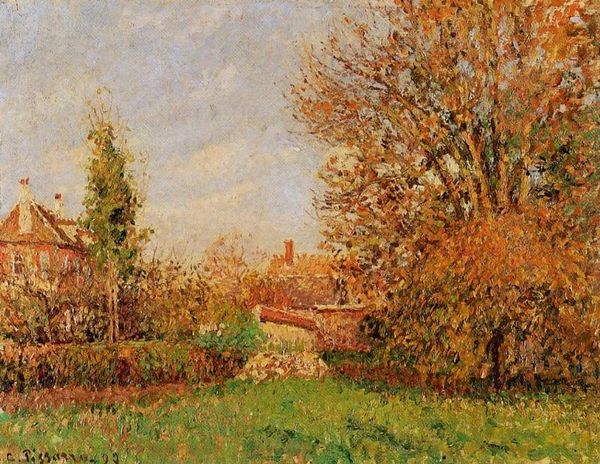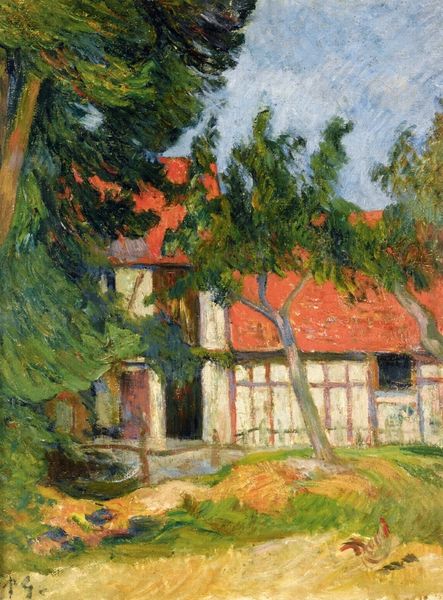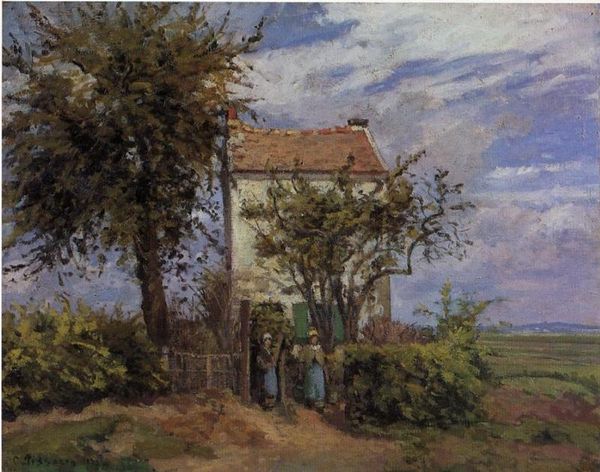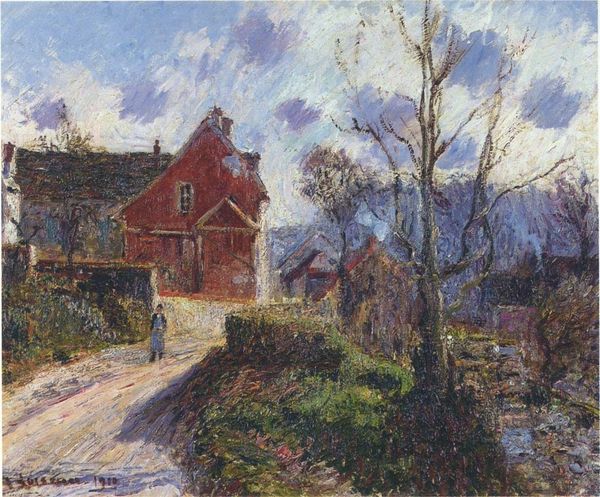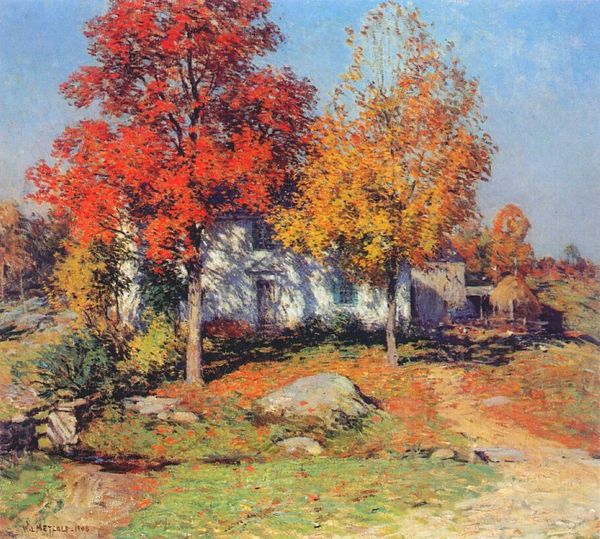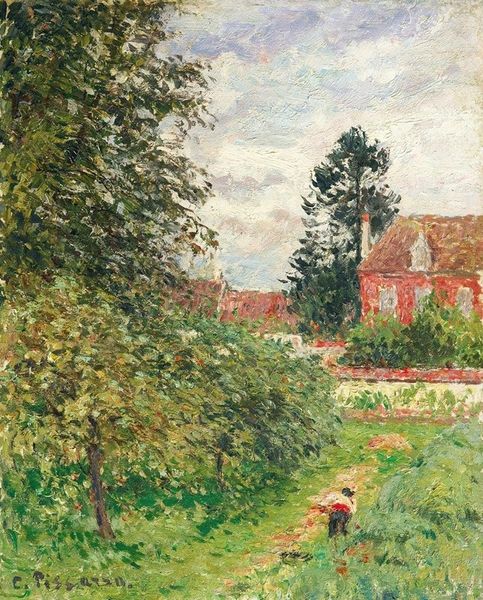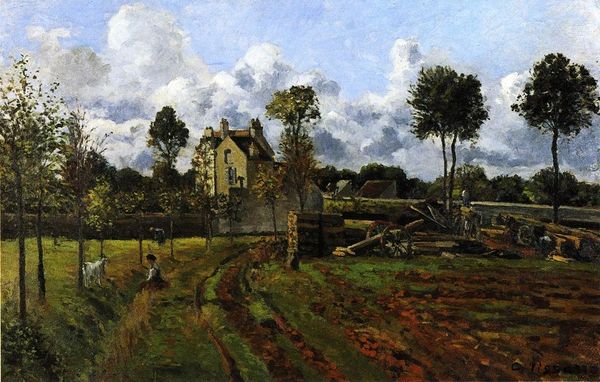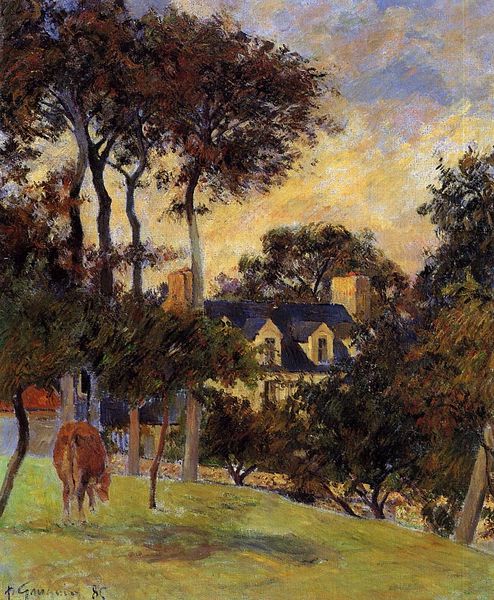
painting, plein-air, oil-paint, impasto
#
painting
#
plein-air
#
oil-paint
#
landscape
#
oil painting
#
impasto
#
geometric
#
cityscape
#
post-impressionism
Copyright: Public domain
Editor: Here we have Gauguin's "Stabble near Dieppe" from 1886, an oil painting done en plein-air. I’m struck by the earthy tones and the almost hidden architecture within the landscape. What layers do you see in this piece, particularly concerning its relationship to society and identity? Curator: It's intriguing how Gauguin positions architecture not as a symbol of progress or dominance, but almost camouflaged within nature, wouldn't you agree? This raises interesting questions about the relationship between humanity and the environment, especially considering the colonial contexts of the late 19th century. What does it suggest about the social structures or power dynamics of the time? Editor: It almost feels like a critique of urbanization, a turning away from industrial society and towards a more "natural" or perhaps even "primitive" way of life. Curator: Precisely. Gauguin's choice to obscure the building and emphasize the surrounding landscape speaks to a larger narrative prevalent in Post-Impressionism – a desire to challenge dominant modes of representation and to question societal values. It's important to consider that this "return to nature" was often idealized and romanticized. Where might we place this work along an intersectional reading about, say, labour or gender? Editor: Well, given Gauguin's later fascination with non-European cultures, does this landscape prefigure that rejection of Western norms? I mean, in the sense of moving towards subjects further removed from European industry, and its impact on people’s lived realities? Curator: That’s a really important point. It shows how early works often contain seeds of later artistic and ideological developments. I appreciate your reading that through the lens of labor, connecting his artistic journey with social consciousness. What are we left to consider now about landscape art itself? Editor: I think it’s a reminder that even seemingly pastoral scenes can be charged with social commentary and reflection. The 'natural' is rarely simply natural, but a construct loaded with ideology. Curator: Absolutely. It underlines the necessity to look beyond the surface and consider the complex interplay between art, society, and identity.
Comments
No comments
Be the first to comment and join the conversation on the ultimate creative platform.
